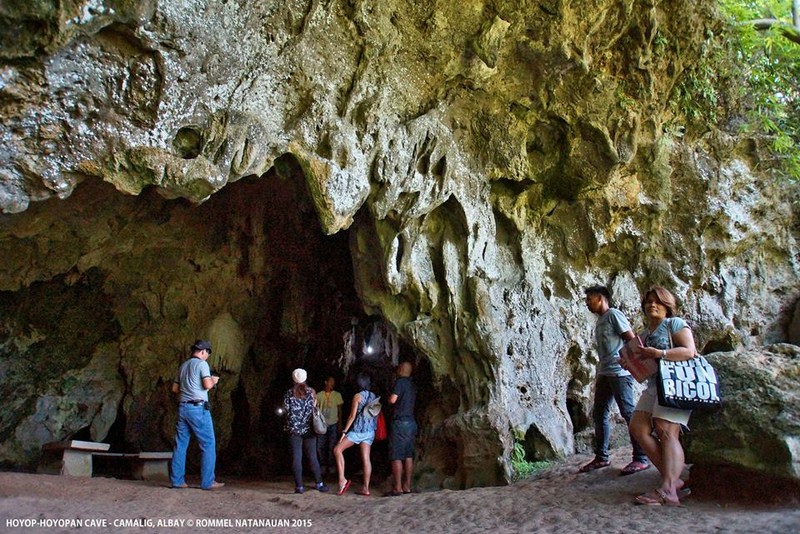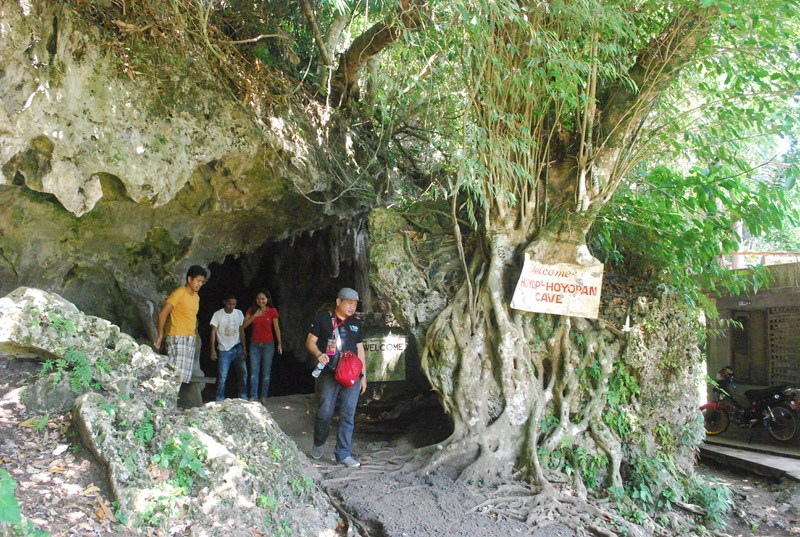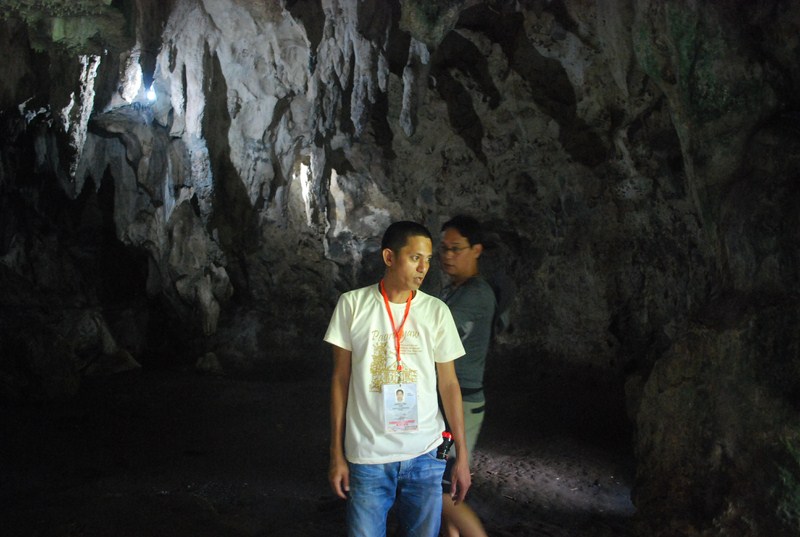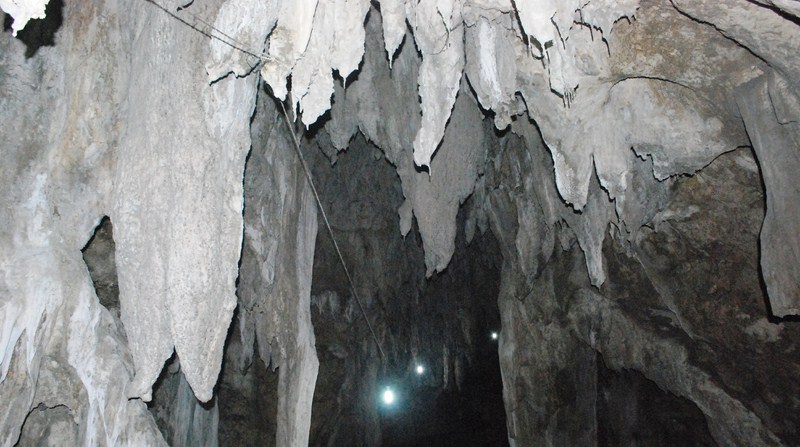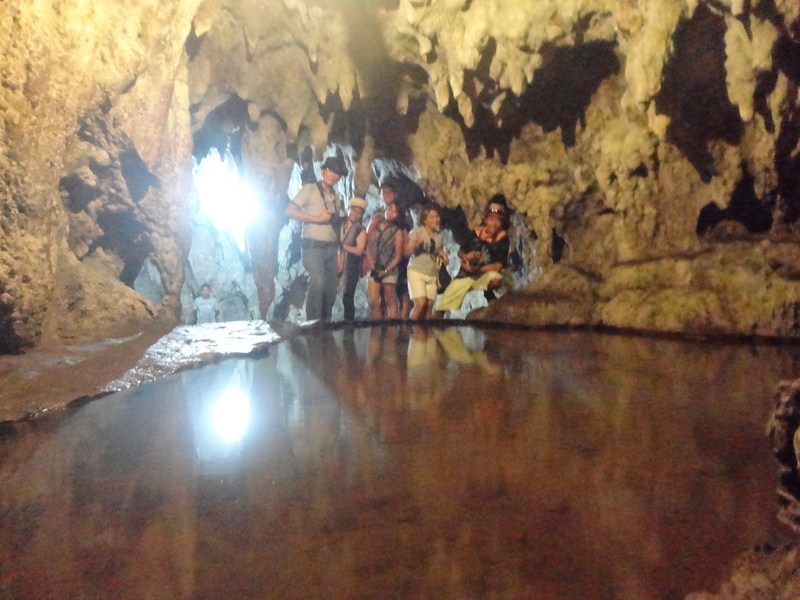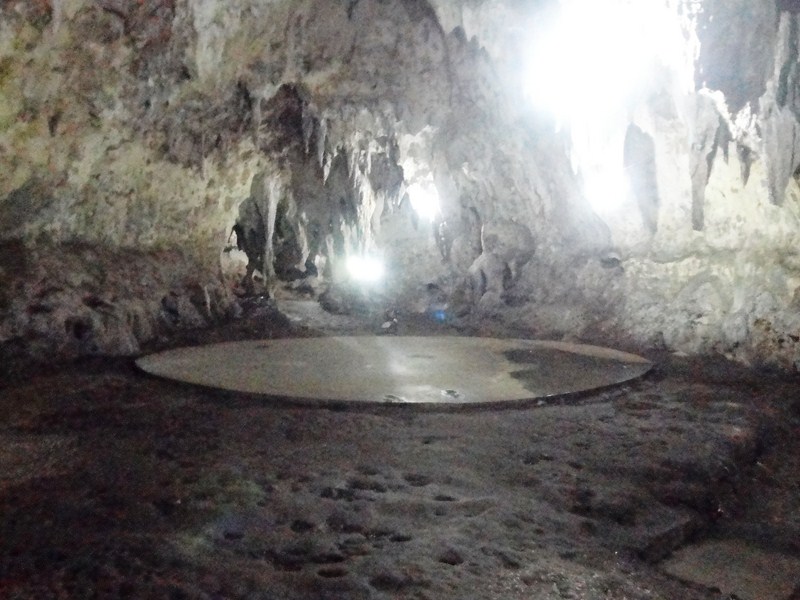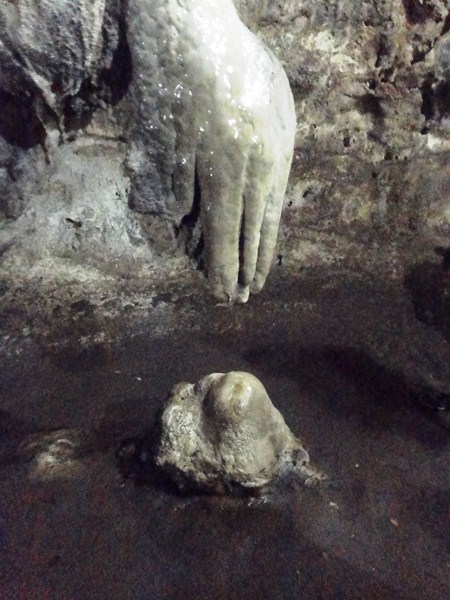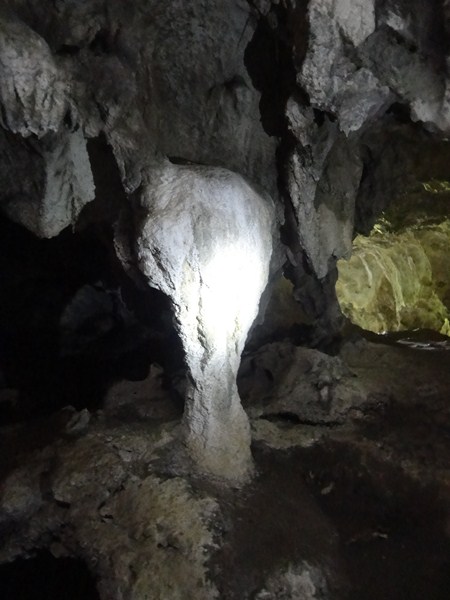After our short stopover at the Cathedral of St. John the Baptist in Tabaco City proper, we proceeded on our way, via a 28.3-km./28-min. drive along the Ligao –Tabaco Rd., to Camalig and a further 8 kms. (a 20-min.) drive south to Hoyop-Hoyopan Caves where we were to do some amateur spelunking. The cave is privately owned and maintained by the Soriano, Nieva and Nuylan families. Here, we were met by Mr. Garner N. Abril, our local cave guide who was well versed in the cave’s history and its trail.
This natural, 3-level, tunnel-like limestone cave, one of the most popular and easily accessible caves in Albay, covers an approximate area of 31.4 sq. m. of land. Located 16 kms. from the Cagsawa Ruins, the cave’s name is derived from the Bicol word meaning “eternal whispering breeze” or “blow-blow” because of the sound of wind whistling through the main entrance. Upon entering, we instantly felt a blow of cold air.
Our tour, done in a group, went through the subterranean path and eventually ended at the other part of the mountain. We traversed a staircase that provided easy access to the other levels of the cave. Strategically placed light bulb along pathways allowed us to fully appreciate the rock formations inside the cave.
In 1972, 2,000-year old bones in burial jars, beadwork and potsherds, dating from 200 B.C. to 900 A.D. and attributed to Calanay complex, were excavated here. The artifacts are now housed at the National Museum in Manila, while some are displayed at nearby Camalig Church. The late Franciscan Fr. Cantius Kobak, OFM, an archaeologist, classified the cave as old as 3000 B.C to 4000 B.C.
During the Japanese occupation in World War II, Hoyop-Hoyopan Cave served as a guerilla and refugee camp of the Hukbo ng Bayan Laban sa Hapon (Hukbalahap) and as a hospital and orphanage. According to stories from the townsfolk, it took three years before the enemies discovered the camp. During the Martial law era, when curfew was strictly imposed, this cave served as a safe haven for party goers and, when a destructive typhoon strikes in the area, as a refuge and shelter.
The cave has wonderful formations of stalagmites and stalactites and numerous entrances and exits varying from two to 10 m. in diameter. Many of the different stalactite formations resemble a chicken drumstick,a statue of the Blessed Virgin, a hanging snake, a hand formation, a sexy lady with long hair, a hanging man, a statue of Moses and a crocodile tail. In order to reach the different chambers, these narrow passageways tested our skill in squeezing, scrambling, crawling, and kneeling to get through to a mini-pond (some sections of the cave have puddles of water) and the “dance hall” (a wide open-space with a round concrete platform installed in the middle ). One of the cave’s openings is a grand window, through which travelers can enjoy a splendid view of Mayon Volcano.
After we exited the cave, we bought some crystals, mounted on key chains, pendants or necklaces, and some native products (hats, etc.) available for sale at a stall. I bought a crystal necklace and key chain as well as one in its raw form (prices, depending on the size of the crystal stone, ranges from PhP50- 500).
Hoyop-Hoyopan Cave: Brgy. Cotmon, Camalig, Albay. Admission: PhP200 for two to three persons, while the parking fee is P25 is also charged. A local tour guide, , can be hired for PhP100 to PhP200 (inclusive of 1 lamp). An additional PhP300 is charged if you want to turn on the lights inside the cave. Public transportation to the cave is also available.
Mayor’s Office: Municipal Hall, Poblacion, Camalig, 4502, Albay. Tel.: (052) 484-1965
Municipal Tourism, Culture and Arts Office: Camalig Tourism and Pasalubong Center, Brgy. 2, Camalig, Albay. Mobile number: (0927) 621-3315. E-mail: camalig_tourism@yahoo.com.
Provincial Tourism and Cultural Affairs Office (PTCAO): Albay Tourism Bldg., Albay Astrodome Complex, Capt. F. Aquende Drive, 4500 Legaspi City, Albay. Tel: (052) 481-0250 and (052) 742-0242. E-mail: albaytourism@yahoo.com and albaytourism@gmail.com.

